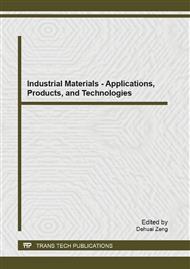p.309
p.314
p.318
p.327
p.332
p.336
p.342
p.349
p.355
The Feasibility of Producing Green Energy Crops on Pb-Contaminated Soil
Abstract:
For the agricultural land contaminated by heavy metal and thus not suitable for growing food crops, combining green crops with phytoremediation technology can provide more green energy crops and implement the soil remediation through a more economic green remediation method. This study selected three crops, which are rich in biomass energy and are suitable to grow in the climatic conditions of Taiwan, namely corn, soybean and peanut, for Pb-contaminated soil situ vegetation planting tests. The results show that the production of biomass by corn was the highest and each plant could produce 1248 g on average, followed by peanut with the average 470.2 g, soybean only 17.6 g. Regarding Pb absorption capacity, each corn could absorb 87.1 mg; peanut 125.3 mg; and soybean only 5.9 mg. Soybean is not feasible because the low biomass production and the total Pb absorption are far lower than those of corn and peanut.
Info:
Periodical:
Pages:
332-335
Citation:
Online since:
August 2013
Keywords:
Price:
Сopyright:
© 2013 Trans Tech Publications Ltd. All Rights Reserved
Share:
Citation:


